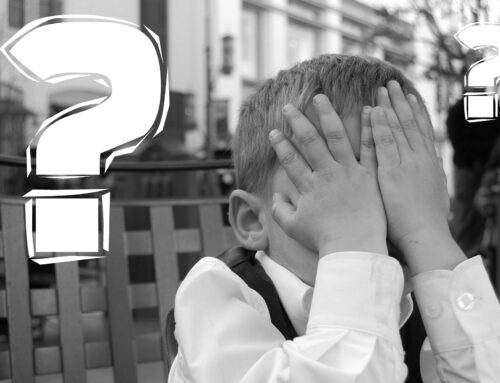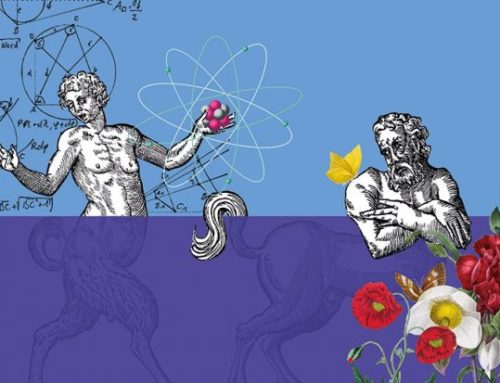Thought experiments in the domain of quantum physics have long captured the public imagination with their strange and “spooky” nature. Schrödinger’s at once dead-and-alive cat and its lesser-known extension, Eugene Wigner’s eponymous Wigner’s Friend, are two famous thought experiments which examine the concept of superposition and the role of the observer in quantum interactions. Until very recently, quantum technologies were simply not advanced enough to replicate Wigner’s Friend and an experiment modelled on Schrödinger’s Cat would no doubt raise serious ethical concerns for animal rights. As such, since their inception these thought experiments have been relegated to the realm of theory and imagination.
That changed last week, when Massimiliano Proietti and his team at Heriot-Watt University in Edinburgh succeeded in performing an experiment modelled on the Wigner’s friend scenario in a laboratory setting. Through this experiment, the researchers sought to explore what is known as the measurement problem—the question of how, and if, the wave function collapse occurs—the central problem in quantum mechanical interpretations.
Using the groundwork previously laid by researchers from the University of Vienna in Austria, the Edinburgh team carried out an extension of the Wigner’s Friend scenario using a “state-of-the-art 6 photon experiment”. The researchers used six entangled photons to simulate a scenario in which the role of both Wigner and his friend were occupied by measuring equipment instead of scientists. As in the thought experiment: “Wigner’s friend measures the polarization of a photon and stores the result. Wigner then performs an interference measurement to determine if the measurement and the photon are in a superposition.”

arxiv.org/abs/1902.05080
The as yet unpublished results prove Wigner’s theory correct. The researcher’s findings suggest that two observers of a quantum interaction can observe two different realities, which are both equally real and correct simultaneously, even if they contradict each other. The implication of this assertion is that in quantum physics there is no objective reality; that reality itself is observer-dependent. The authors of the study suggest that these results necessitate an evolution in our understanding of quantum theory, a shift toward theoretical frameworks that are observer-dependent and away from interpretations that are not.
The impact of this conclusion, which proposes an unconventional interpretation of the notion of reality, could extend far beyond the discipline of physics.
Strikingly, the assumption that multiple, contradictory realities can coexist calls the concept of objective fact—the very pursuit of science itself—into question. This point, posed in an article by the MIT Tech Review, jeopardizes the assumption of the existence of “universal facts”. How might an understanding of the world around us, in which there is no shared, objective reality, change not just science but also social theory?
Of course, it is hasty to argue that quantum theory applies seamlessly to the social world, suggesting there is a direct, logical mapping. Thus far, the topic of how the microscopic quantum world effects our macroscopic, visible world has not been fully explored through research. That does not mean, however, that there is no symmetry. The question of the universality of quantum theory continues to permeate thinking today, much as it had captured the imagination of quantum theorists in the early 1900’s.
Schrödinger’s Cat (1935), for example, explores the question of the relationship between quantum and classical reality. Among other revelations, this thought experiment suggests that projecting nanoscale quantum theory onto a macro-scale experiment produces logic-defying results, ultimately leading to the conclusion that a cat cannot be both alive and dead at the same time. Schrödinger wished to argue that the dominant Copenhagen Interpretation of quantum physics, which states that an object in a state of quantum superimposition can exist in all possible configurations, does not hold at the macroscale.
Nevertheless, this problem posed by the Copenhagen Interpretation, considered by Schrödinger to be settled by his theoretical experiment, persists.
The findings of the Edinburgh team suggest that in fact Schrödinger’s cat can be both dead and alive at the same time, leading to a whole new set of questions and theories. One way to accommodate for the experiment’s result, the authors write: “…is by proclaiming that “facts of the world” can only be established by a privileged observer—e.g., one that would have access to the “global wavefunction” in the many worlds interpretation or Bohmian mechanics.”
As the authors suggest, this research potentially validates the Many-Worlds Interpretation (MWI). The MWI, as the name suggests, stipulates that each quantum interaction produces not just one result but all possible results, which exist simultaneous, branching off to form different versions of reality and producing many independent histories, futures and worlds. The researchers propose that in order for the concept of objective reality to function in the context of their findings, the holder of that knowledge must, in a godlike fashion, have access to all information from every possible reality.
Scientific theory produces claims at knowing and understanding the world around us as it really is. Quantum physics, however, has the potential to unravel this by posing the most fundamental question of all: What is reality?







Presumably if this is true, it defines a universal objective reality? The philosophical explanations associated with quantum mechanics always seem to be used to justify a subjective worldview, which suggests an agenda. In physics, of a law or theory is true, it describes a universal, objective and knowable truth. Even Einstein, the developer of “relativity” acknowledged that. I suspect the actual philosophical – and indeed scientific – conclusions in this instance are simply different than what is being offered.
[…] 1957 for example, Hugh Everett constructed a theory to account for quantum superposition with his Many Worlds Interpretation (MWI). Essentially, Everett’s MWI proposes that for every state of an atom’s superposition in a […]
In 1957 twins were born twin A a normal birth twin B complications died at birth..was revived and transfused with o- blood..yes twins have different blood types did one reality cease at death and another begin when twin B was revived?..I’ve never really thought I’ve been a part if this reality..
Hi there,
Thank you very much for your through-provoking comment. As I myself am not a quantum physicist either, I dig a bit of digging through the researcher’s background material in order to better understand the nature of their Wigner’s Friend extended experiment. You may find the following article helpful:
https://www.mdpi.com/1099-4300/20/5/350/htm
It is also worth noting, as is often the case with quantum news, that headlines tend to be sensationalist! As stated in the article, the authors posit that the multiple worlds interpretation is only one of several possible conclusions from their experiment. Hope this helps!
-Gabriella
I haven’t heard the following question raised before, but I’m speculating the answer may be meaningful to fully understanding the implications of this experiment: Even though Observer 1 has observed and recorded the polarity of the photon that Observer 2 later independently determines is in superposition by running the interference experiment, what if Observor 2 simply performed the same polarity measurement performed by Observor 1 instead of performing the interference experiment? Is it possible that Observor 2 could measure a different polarity than was measured by Observor 1? Isn’t this additional experiment necessary to fully understand what is or is not happening? After multiple experiments, if Observer 2’s polarity observations ALWAYS matched the exact same results measured by Observer 1, wouldn’t this indicate some other quantum mechanism of action is at play?
Perhaps there are NOT two different realities as this experiment seems to suggest, but instead both observers are observing the same reality. Perhaps what is different for each observer is the time frame captured in measuring the polarity of the photon versus the time frame captured when performing the interference measurement.
I would suggest that concluding two different realities exist may be premature until and unless each observor measures a different photon polarity that would have been predicted consistent with known probabilities that vertical or horizontal polarity orientation would result in any given experimental run. Now, if Observor 1 determines the photon polarity is vertical while Observor 2 independently determines it’s polarity is horizontal, now we’re talking paradox of mind numbing proportions!
Btw, quantum physics is far above my pay grade, so any feedback that could help me better comprehend the underlying science would be greatly appreciated.